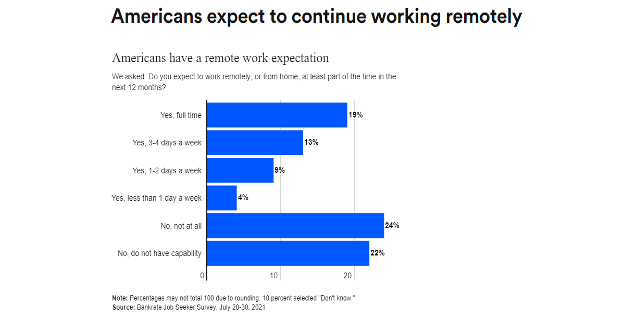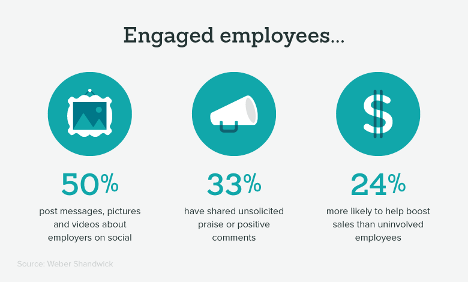
In business communications, we often focus on external comms. Communicating with our customers and marketing are always a priority. Yet, many businesses don’t pay as much attention to internal communications. This is a mistake. Efficiency will decline without the internal comms system necessary to support your staff. If employees can’t communicate effectively, they can’t collaborate or get vital information for customers.
Having a strong internal comms strategy can keep your staff engaged and provide a better work environment. The increased efficiency of having an effective comms system will make life better for your staff, your customers, and your bottom line.
What Is an Internal Communication Strategy?
An internal communications strategy is more than just which PBX line you use. Whenever your business interacts with your employees is something to consider. Having a strategy for this will help engage your employees and provide the support they need to succeed.
Your internal communications strategy covers:
- The channels you use to communicate internally
- The tone & content of internal messaging
- Channels of employee feedback
- Access to training & development resources
- Targets & progress meetings
To get started with a communications plan, assess your current internal comms. Source internal feedback and identify areas for improvement.
Why Is Internal Communication So Important?
Keeping employees engaged in an increasingly remote work environment isn’t easy. When employees don’t feel challenged or don’t feel recognized, they’re more likely to leave their roles. Internal communication is key to employees feeling connected to their employer.

Image sourced from bankrate.com
Employee Engagement
Studies show that engaged employees are more productive. Teams with high engagement are more profitable and see lower rates of staff turnover. Internal communication plays a central role in keeping your employees engaged.
Use your internal comms to engage employees in a two-way conversation. Clearly communicate your organization’s goals and your employee’s role in achieving them. When staff have a clear idea of how their role helps the business succeed, they’ll be more engaged with that success.
Feeling valued by their employer is a key motivator for the average employee. That means that regular recognition and progressive performance reviews can help engagement too. Listening to your employees and helping them succeed is vital to staff retention.
Collaboration
With better tools for employee communication, you enable collaboration among your teams. With clearly defined internal communication methods, staff can have instant, open dialogues. It makes collaborating on everything, from training to solving customer problems, easier.
Innovation
Ideas can come from anywhere in your business. Sometimes the best person to optimize a process is the person who does the task every day. When the staff at all levels have an open channel for communication, you can tap into this potential.
Development
Staff development is a continual process. For effective development, two-way communication is important. Having a space to discuss issues, receive praise, and focus on areas for development will help your staff grow in their role.

Image sourced from gartner.com
How to Use Internal Communications to Develop Your Staff
Effective communication is important in every part of your business. No company could operate if their departments couldn’t communicate. Yet, good communication can help more than just your operations.
Having an internal communication strategy that allows business leaders, managers, and employees to communicate effectively, can assist in employee development. These are the best tips for using internal communication to develop your staff.
Communications KPIs
To know how you can improve your communication, you need to know how to measure its success. Use employee feedback like pulse surveys or employee satisfaction scores. Then combine this with factual data like email open rates and engagement in your comms channels.
It will show you any areas for improvement. Don’t be afraid to adjust your communications strategy over time. It will open the way for improved employee communication and increased engagement.
Employee Interactions
Map your standard employee interactions from onboarding to parting ways. It will give you a clear picture of every opportunity you have to influence their development. When you look at the employee journey this way, you can set out a roadmap for developing your staff.
Not everyone will develop at the same rate, so there will be some adjustments. A predefined plan can help ensure that more staff reach their potential. This Process Bliss guide to micromanagement can help with creating a plan.
Plan Communication Types & Channels
It’s crucial to plan the channels you will communicate through, whether that’s internal messaging, phone, email, social media, etc. Having a space for your employees to interact in and out of work is great.
However, too many channels can make management difficult or lead to low engagement numbers in each channel. discover the most effective channels for your business, and narrow it down to those essential for work and those popular for interaction.
You’ll also need to consider the tone and content of your communications when planning. It will help to divide the types of communication into categories. For example, manager to employee, employee to employee, employer to manager.
Create A Comms Calendar
Creating a calendar for internal communications can help keep you on message and keep everyone’s inboxes from overflowing with internal emails. Plan weekly update bulletins, meetings, seminars, and so on.
You can use a simple calendar tool as you’d find in Gmail, or even an Excel spreadsheet, to keep track. Keep it simple. Plan all essential communications first. Then, you can build out more personal or optional communications around that.
Two-Way Communication
When it comes to staff development, you need to engage with employees directly. It’s important that you listen to your staff and provide the feedback they need from you. That means internal communication should always work both ways.
This doesn’t just mean being open to feedback during one-to-ones. Having a space for employees to share their stories and socialize can help even remote staff to feel connected. Seeing others succeed and sharing ideas can help motivate and engage your employees.
Keep Your Employees Connected!
Internal communication is the backbone of your business. Whether you’re demonstrating NATO’s history of the phonetic alphabet to your call center staff or organizing a coffee morning, it’s all a part of your internal comms. Make the most of your staff by enabling them with a solid internal communications strategy.



